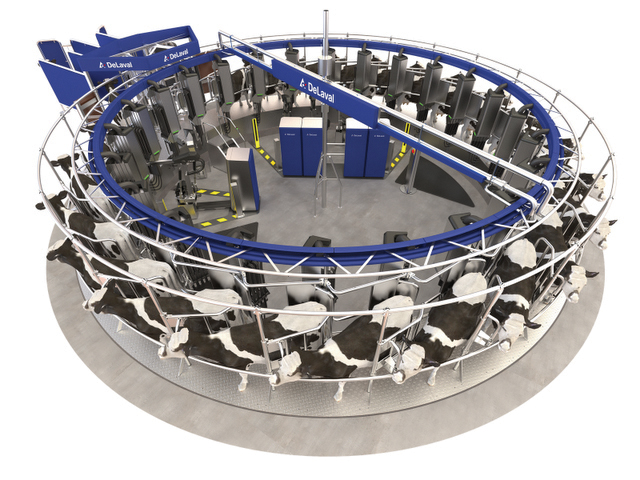Rotary milking parlors were invented in the 1920s. The first industrial robot went into operation at a General Motors auto assembly plant in 1961. The microprocessor was invented by Intel in 1971. Robotic milking stalls first appeared on dairies in the early 1990s.
In just a few weeks, the world's largest dairy equipment company will debut the marriage of those four breakthrough technologies in the form of an automated milking machine attachment system for rotary parlors. Rumors of such equipment operating in Australia were proved correct on September 14, when DeLaval announced it will introduce the world's first automatic milking rotary system, the DeLaval AMR, at the EuroTier 2010 farm show in Hanover, Germany, November 16-19.
"In December 2008 we said that we were developing an automated milking system for large herds and now we are ready to show it to the world," DeLaval President and CEO Joakim Rosengren said in a company press release.
Unfortunately, not even the most basic details about how the system works have been announced by the company, and the one photo that was released shows what appear to be two attachment stalls on a 24-unit rotary milking platform.
Relatively long machine attachment time is the bottleneck to how many cows can be milked in all individual robotic milking stalls currently on the market. Has DeLaval made a breakthrough that allows faster attachment so a rotary doesn't have to stop? If so it will be both a quantum breakthrough in dairy technology and an exciting dream come true for thousands of milk producers.

In just a few weeks, the world's largest dairy equipment company will debut the marriage of those four breakthrough technologies in the form of an automated milking machine attachment system for rotary parlors. Rumors of such equipment operating in Australia were proved correct on September 14, when DeLaval announced it will introduce the world's first automatic milking rotary system, the DeLaval AMR, at the EuroTier 2010 farm show in Hanover, Germany, November 16-19.
"In December 2008 we said that we were developing an automated milking system for large herds and now we are ready to show it to the world," DeLaval President and CEO Joakim Rosengren said in a company press release.
Unfortunately, not even the most basic details about how the system works have been announced by the company, and the one photo that was released shows what appear to be two attachment stalls on a 24-unit rotary milking platform.
Relatively long machine attachment time is the bottleneck to how many cows can be milked in all individual robotic milking stalls currently on the market. Has DeLaval made a breakthrough that allows faster attachment so a rotary doesn't have to stop? If so it will be both a quantum breakthrough in dairy technology and an exciting dream come true for thousands of milk producers.









